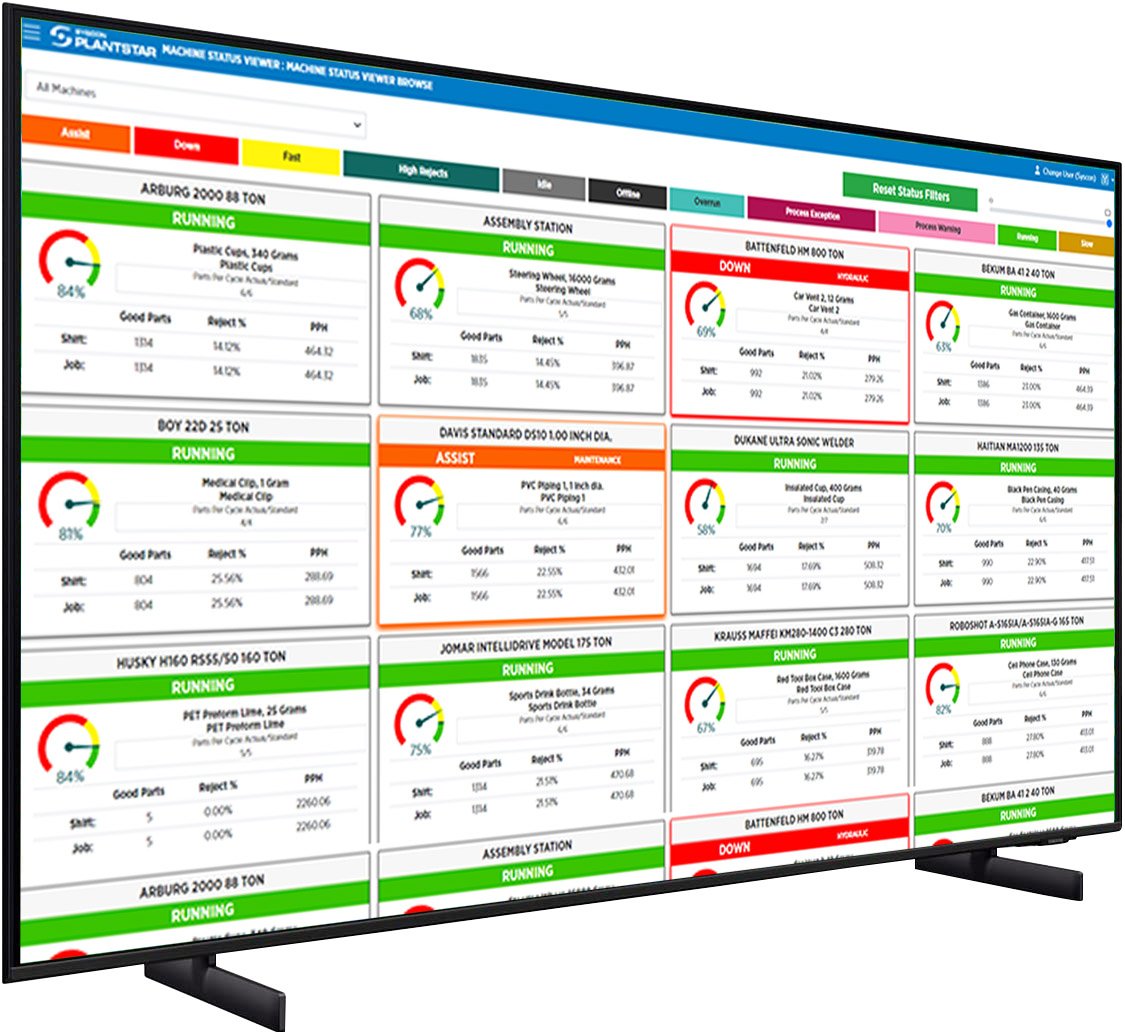SYSCON PlantStar BLOG
How MES Software Helps Minimize Manufacturing Downtime
Jan 27, 2022 5:30:00 PM / by David Crowley

"The system is down," — four short words that raise a manufacturing executive’s stress level. Nowadays, suppliers rely on their computer systems more than ever before to keep the organization humming. A Manufacturing Execution System (MES) provides production line personnel with the data needed to manage downtime proactively rather than reactively and therefore minimize its impact.
Information, as much as any other component, makes the manufacturing process flow. Suppliers need to know what their customers desire, what materials are in the supply chain, where the manufacturing operation stands, what goods are on their way to their clients, and what the next day will bring. The MES disseminates this type of information to factory management and production line employees.
MES systems are more than just databases of parts inventory or statistical charts, they help manufacturers manage their supply chains by providing real-time data. They enable faster deliveries, reduce cutoffs, increase productivity rates, eliminate waste, boost profitability and ensure on-time delivery.
Identify Downtime’s Source
Traditionally, executives oversaw manufacturing plants from behind. They examined historic reports to understand what happened in the supply chain, on the shop floor, and during delivery. Then, they took steps to mitigate problems, but typically, any damage from unplanned downtime had already been done. To get in front of the problem, they need to identify why downtime occurs.
The most obvious cause is that machines break down, usually unexpectedly. With machine downtime, production lines stop, workflow is slowed, contingency plans are enacted, and vendors lose money. In fact, equipment failures are responsible for 42% of all plant floor downtime and cost U.S. manufacturers $50 billion annually in lost revenue.
Personnel also play a role. Employees sometimes miss their shifts. A holiday changes the production schedule. During the pandemic, employees caught COVID or were exposed to individuals who had it and self-quarantined. In other instances, smart factory workers did not feel comfortable coming into work because of a spike in cases.
Material delivery sparks other snafus. The pandemic has had a tremendous impact on the flow of materials from source to destination. Delays occur at every step of the process: gathering materials, producing them, shipping them, delivering them, and infusing them into a factory floor.
Device maintenance — or planned downtime — also plays a role. Periodically, machines need to be taken offline, sometimes tested and other times tuned, so they continue to operate at peak performance.
The High Cost of Downtime
Regardless of the reason, the impact on the business is significant. In fact, downtime costs manufacturers up to $260,000 per hour, according to Aberdeen Research.
So, managers want to limit downtime as much as possible. The process starts with better access to supply chain, manufacturing, and distribution information. Historically, managers managed from behind because they did not have a choice. They lacked the tools to examine real-time performance data. A big problem has been that plant data was generated and stored in a hodgepodge of systems that did not talk to one another. By the time managers pulled the information from the different systems and consolidated it, it was outdated.
An MES addresses those limitations. The software automates data collection from machine operations and other applications. MES software creates a central repository for supply chain and manufacturing data. These solutions provide suppliers with many advantages.
1. Gain a Better Understanding of Downtime
Like other metrics, downtime has been an area where suppliers have lacked visibility because of the way organizations house performance data. SYSCON PlantStar's features include tracked downtime functionality. Customers can examine reports that illustrate the top causes of downtime in their plants as well as potential downtime coming from items, such as equipment wear and tear.
2. Respond to Problems Faster
Real-time problem notifications enable suppliers to better manage their production floor. If a device is malfunctioning, the MES sends an alert to the manager. The company makes changes that keep it within the desired target. In that way, they minimize downtime and boost Overall Equipment Effectiveness (OEE).
3. Move from Preventative to Predictive Maintenance
Many suppliers now practice preventive maintenance. Here, device tuning is scheduled based on either set time intervals or equipment trigger points, such as a conveyor belt whirling for the 1,000th time. The goal is for manufacturers to tune the device before it is about to fail, but the approach’s effectiveness of this approach is unclear. A Boeing study found that 85% of all equipment failed randomly no matter what preventive maintenance measures were applied.
Predictive maintenance is more sophisticated tuning. Artificial intelligence, machine learning, and data analytics gauge an asset’s efficiency. Recommendations are based on items, like vibration analysis, oil analysis, and thermal imaging. This process lengthens machinery lifecycles and reduces downtime.
Manufacturing companies have been reacting to system downtime because they lacked the tools to manage it proactively. An MES empowers them to take steps and prevent unplanned downtime. The change results in a productivity boost, cost savings, improved customer satisfaction, and increased revenue.

Schedule A Demo
Topics: Manufacturing Execution Systems
Subscribe to Email Updates
Posts by Topic
- Manufacturing Execution Systems (34)
- manufacturing solutions (16)
- MES 101 (12)
- Industry 4.0 (10)
- improve efficiency (9)
- mes software (9)
- mes solutions (9)
- Plastic Molding (8)
- Plastics Technology (8)
- Shop Floor Production (8)
- MES hardware (7)
- digital transformation (7)
- Reduce scrap (6)
- data-driven-decisions (6)
- lean manufacturing (6)
- process monitoring (5)
- product quality (5)
- Medical molding (4)
- lights-out manufacturing (4)
- manufacturing dashboard (4)
- production monitoring (4)
- Shop Floor Safety (3)
- supply chain management (3)
- ERP integration (2)
- Injection Molding Technology (2)
- defect collection (2)
- machine mes (2)
- process variables (2)
- digital strategy (1)
- labor gap (1)
- throughput (1)


